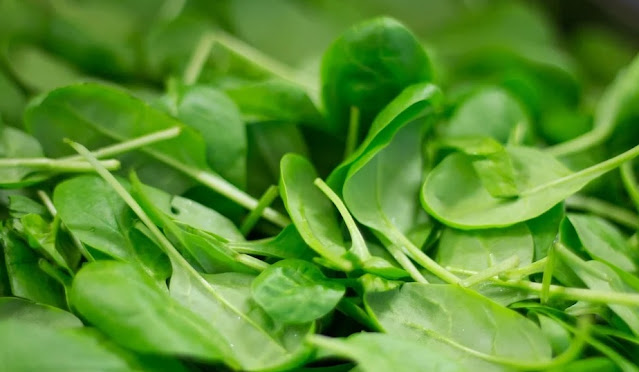Spinach ( Palak ) Farming: A Highly Nutritious Leafy Crop packed with vitamins and minerals
Indian spinach, or Palak (Basella rubra or B. alba L.), belongs to the family Basellaceae. Palak is a common perennial leafy vegetable throughout India. The plant has fleshy stems, and its leaves have a trailing and climbing habit. The tender stems and leaves of this crop may make wholesome
Nutritive Values of Spinach or Palak:
| Nutrient | Value | Nutrient | Value |
| Moisture | 91.4 | Protein | 2.9 g |
| Fat | 0.4 g | Mineral | 0.9 g |
| Fiber | 2.2 g | Carbohydrate | 3.6 g |
| Calories | 97 | Calcium | 99 mg |
| phosphorus | 49 mg | Iron | 2.71 mg |
| Vitamin A | 9377 IU | Potassium | 558 mg |
| Vitamin C | 28 mg | Magnesium | 79 mg |
The health advantages of spinach.
1) Reduce blood pressure; Potassium is one of the many essential minerals found in spinach. Consuming potassium-rich foods can help reduce blood pressure.
2) Keeps eyes healthy: Lutein, an antioxidant that helps prevent age-related eye conditions including cataracts and macular degeneration, is abundant in spinach.
3) Improved ability to think; It has also been demonstrated that lutein helps maintain cognitive function.
4) Improves bone health: Spinach is a great source of vitamin K, which is important for bone health and growth.
5) Good for Skin health; Vitamin A, which is present in spinach, is used by your body to develop tissue, including your skin, which is the largest organ. Vitamin A helps your skin keep hydrated, which may lessen the appearance of fine lines and wrinkles, in addition to supporting your skin’s immune system, which guards against illness and injury.
6) Keeps Blood in good health; Iron, which aids in the production of hemoglobin, is abundant in spinach. Hemoglobin facilitates the movement of oxygen throughout your body from your lungs.
Climate Requirement for Spinach or Palak Cultivation:
Soil & its Preparation in Spinach or Palak Cultivation;
It does well in loam and heavy loam soil. Avoid acidic and waterlogged soils for spinach cultivation. The pH of the soil should be in the range of 6 to 7. Spinach is grown as a pure crop or a companion crop of edible arum.
Important Varieties of Indian Spinach, or Palak:
Sowing of Spinach or Palak Seeds;
(a) Sowing time. The seed is sown from the middle of January to the middle of March for the summer crops and from the middle of April to the middle of June for the rainy season crop. But it can be cultivated throughout the year.
(b) Seed rate. The seed rate is 4-6 kg per acre for the winter season and 10-15 kg per acre for the summer season.
(c) Method of sowing. It is generally propagated through seeds. The seeds are sown by broadcasting for the early crop. But for the main crop, the seed is sown by the dibbling method at a spacing of 15 cm (row to row) x 60 cm (plant to plant). It may also be propagated by root or stem cutting.
Manuring in Spinach Crop;
The manure schedule is 20 to 25 cartloads of compost, or F.Y.M., 50 kg of urea, 30 kg of superphosphate, and 30 kg of muriate of potash per acre, and these should be applied with the last preparatory tillage. 30 kg of urea should be applied as a top dressing two weeks after sowing.
Aftercare of Spinach Crop:
One or two weddings are given during the early stages of growth. Stalking is beneficial for this crop. Irrigation is given as and when needed.
Harvesting of Spinach Crop
The crop becomes ready for harvesting after 6 to 7 weeks of sowing. Crops are harvested at an interval of 10 to 15 days.
